Bitcoin
Why These Bitcoin Miners Are Becoming Summer’s Hot AI Stocks

Crypto miners are harnessing their advanced equipment and low-cost energy for the burgeoning artificial intelligence sector. As the demand for computational power soars, these miners are uniquely positioned to profit from the AI boom.
By Nina Bambysheva, Forbes Staff
Energy has become the hot commodity in the artificial intelligence world. Take cloud computing provider CoreWeave, which earlier this month inked a $3.5 billion deal with Core Scientific. The agreement involves CoreWeave paying $290 million annually over 12 years for the Austin-based bitcoin miner’s data centers to host AI-related computing hardware. CoreWeave will also cover all capital expenditures.
The deal was so good that Core Scientific’s stock doubled to $10 in early June, leading some observers to view the company as the new “picks and shovels” play for AI. On June 26, CoreWeave announced a second contract, this one projected to bring Core Scientific $1.2 billion in revenue in the coming years. Core Scientific emerged from bankruptcy in January and is one of the largest bitcoin miners in North America.
The soaring demand for heavy-duty computer capacity, driven by AI applications such as ChatGPT—its queries require 10 times the electricity of traditional Google searches—is putting a premium on companies like Core Scientific that have access to cheap power in states such as Texas and North Dakota and agreements to tap more energy from elsewhere. Having sufficient power available now is vital when you consider that building high-performance computing (HPC) data centers from scratch typically takes 3-5 years, with current wait times for electrical-grid connections stretching up to six, according to the Lawrence Berkeley National Laboratory research center.
Adam Sullivan, CEO of Core Scientific
Courtesy of Core Scientific
“The demand is insatiable,” says Adam Sullivan, Core Scientific’s CEO. “If we just execute on what is within our current contracted power today, we’d be a top 10 data center company in the United States hosting a very significant portion of AI that’s done in the United States over the coming years. We’ve been working very closely with Nvidia and a number of different partners on the development and design of what’s required to operate these chips.”
Since Core Scientific’s announcement of the first CoreWeave contract on June 3, the aggregate market value of 14 U.S.-listed bitcoin miners surged by 22%, according to research by JPMorgan, a stark contrast to the 12% decline in bitcoin and a 4% rise in the S&P 500.
The 14 miners control about 5 gigawatts of power and can spare 3.6 gigawatts of that for HPC, a June 24 research report by JPMorgan indicates. They also have purchase agreements for an additional 4.5 gigawatts from new power plants in various stages of construction and permitting.
That new energy is enough to support about 3.4 million households for a year, and it could come in handy. Driven by the AI boom, data centers’ energy demand could surge to 9% of U.S. power generation by 2030, according to the Electric Power Research Institute. This projected increase is more than double the current usage.
But the miners cannot easily repurpose their excess electric capacity for AI. “Near term, power is extremely hard to find in large quantities, and that’s the big asset a lot of the U.S. bitcoin miners have right now, but those power contracts are valuable if they have the other pieces that go along with it, primarily fiber connectivity,” says Wes Cummins, CEO of data center developer Applied Digital. Fiber-optic cabling is crucial in high-performance computing because it is what enables high-speed data transfers.
Kevin Dede, an analyst at H.C. Wainwright, notes, “Bitcoin purists will push back and say, ‘No, you can’t host AI machines in a bitcoin mining data center.’ Okay, I get it, you can’t. You need cleaner air and better cooling.” But smaller AI players that may not have an appetite for quite the same computing and power provided by hyperscalers—companies with massive data centers and cloud infrastructure such as Amazon’s AWS, Microsoft Azure and Google Cloud—could better integrate with the level of service range bitcoin miners are accustomed to delivering, which may ultimately lead to a bitcoin mining/HPC data center hybrid, he adds.
There is evidence that investors agree.
“Listed bitcoin mining stocks have re-rated during the past three weeks as the value of the miners’ power assets has come to the fore,” wrote Mark Palmer, an analyst at investment banking firm Benchmark, in a June 21 research note. “The average enterprise value/revenue multiple of a selected group of listed miners, including IREN, TeraWulf and BitDigital, is now at 7.8x, up from 5.2x two months ago.”
This is timely given the latest halving of the reward for adding a block to the Bitcoin blockchain. The reduction of the payment to 3.125 bitcoin has resulted in mining earnings reaching historic lows. In addition, the 10 miners that we found to be considering AI projects were all unprofitable last year, with bitcoin slowly recovering from the effects of the 2022 crypto winter and trading below the cost of mining it.
While Core Scientific is in the spotlight, several other miners have also been adjusting their operations to capitalize on the AI wave:
IREN
Formerly known as Iris Energy, IREN was one of the earliest companies to recognize the opportunity. JPMorgan calculates it is best positioned to take advantage of the HPC/AI demand, based on its track record of building high-quality data centers on time. The company also recently purchased 816 Nvidia H100 GPUs— arguably the most powerful chips for AI. “Outside of Core Scientific, IREN and maybe Hut 8, we haven’t really seen that level of materialized revenue coming from the AI business,” says Mike Colonnese, another analyst at H.C. Wainwright.
HUT 8
The Miami-based bitcoin miner announced a $150 million investment from Coatue Management, which has also backed CoreWeave, to build AI-related infrastructure. Coatue will buy a five-year note, which the company can extend for up to three years. The debt will pay 8%, and Coatue can convert it into stock, initially at $16.395 a share. That was a 45% premium when the deal was announced, but Hut 8 is now trading at $14.99.
Asher Genoot, CEO of Hut 8
Courtesy of Hut 8
“We want to work with partners that have scale or will be there for a long period of time for us to grow and continue building with, well-known names within the broader ecosystem and the AI sector, and we are in conversations with many of these counterparties,” says Asher Genoot, CEO of Hut 8. The key part of the equation is not only which companies will get an opportunity to address this market, but which companies will have the ability to deliver, and Hut 8 is one of them, he claims.
“Hut 8 has demonstrated its ability to stand up greenfield sites for energy assets and data centers relatively quickly and inexpensively,” agrees Benchmark’s Palmer. He rates Hut’s stock a buy with a $17 price target.
APPLIED DIGITAL
One of the first miners to pivot to building HPC data centers, Applied Digital recently signed a letter of intent with an unnamed U.S. hyperscale computing provider for a lease of 400 megawatts. The company’s Jamestown, North Dakota, facility is an interesting example of an attempt to balance mining and HPC efforts, according to H.C. Wainwright’s Dede—what’s becoming known as a mullet data center. Similar to the hairstyle, this kind of facility combines high-performance computing operations up front and bitcoin mining operations when there’s excess power capacity.
“I think people are very focused on power right now, but there’s a lot of other pieces that are very important if you want to transition your business from bitcoin mining to HPC,” says CEO Cummins, pointing out at wait times for key electrical gear of up to more than 2.5 years and competition for employees that has experience with large-scale data centers. “We spent a lot of time on this already. We’ve worked through the supply chain issues, we’ve picked up the experts. We really see ourselves as an HPC infrastructure company in the future.”
John Todaro, an analyst at Needham, named Applied Digital its top pick for HPC/AI while also highlighting IREN, Core Scientific, TeraWulf, Bitdeer, Hut 8, Bit Digital and HIVE Digital Technologies.
Bitcoin Miners Go AI
For the more pure plays, like Riot, CleanSpark and Marathon Digital Holdings, the three largest U.S. bitcoin miners by market capitalization, traditional crypto motivations remain strong. Bitcoin is near all-time highs, and supports like rising macro and political uncertainty are unlikely to fade soon.
“I think the optimal use of our resources is to focus on bitcoin mining and helping share the positive relationship to energy. Not only does it help stabilize the power grid, but it’s the future of money and there is a finite amount that will ever be mined. Some of our data centers could support HPC but we believe we are making a more positive impact and achieving success under our current strategy,” said Zach Bradford, CEO of CleanSpark, in a statement to Forbes.
Marathon has actually expanded its mining activities by adding kaspa (KAS), a proof-of-work digital currency, to its portfolio. “By mining kaspa, we are able to create a stream of revenue that is diversified from bitcoin, and that is directly tied to our core competencies in digital asset compute,” said Adam Swick, Marathon’s chief growth officer, in a statement shared on the company’s website. In March Forbes included Kaspa in its list of zombie blockchains because of little discernable use.
CleanSpark earlier this month announced it had added five mining sites in Georgia, worth $25.8 million, and on June 27 said it agreed to buy peer Griid Infrastructure in an all-stock deal valued at $155 million. Riot, meanwhile, is trying to take over rival Bitfarms via a proxy battle.
Investors in pure play mining should be a little bit more cautious, warns the analyst known on X as pennyether. “They’re sort of already pricing in a rally in bitcoin, but if it doesn’t happen, say we held to $60,000 per bitcoin for another year, I have to imagine that a lot of the mining stocks are going to take a substantial haircut.”
Sure, it’s hard to break into a new, highly complex industry, writes Colin Harper, head of content and research at bitcoin mining services firm Luxor Technologies, and “it becomes even more difficult when you consider that miners will be competing with some of the largest, most heavily capitalized tech companies on the planet.”
It could cost upward of $10 million per megawatt to build out AI data center infrastructure, while bitcoin mining sites’ megawatt cost between $300,000 to $500,000, according to H.C. Wainwright’s Colonnese. “The market has typically responded well to anything with AI but these are very capex-intensive builds, and you have to get them right,” he says.
Still, a shift to AI operations for those with available infrastructure and energy capacity offers potentially compelling benefits. By replacing the volatility of bitcoin with more stable revenue from AI computing, miners can benefit from predictable budgets funded by established customers. This also helps miners boost income to be able to afford the high capital investment necessary to stay competitive with new mining equipment, concluded analysts at Morgan Stanley in an April report.
“The truth is that AI companies can pay more for that power because they don’t care. Their business model is stronger. With bitcoin mining, you have no idea what the price of bitcoin is going to be or how hard it’s going to be to mine one, so you’re taking a lot more risk,” says Dede.
Morgan Stanley’s report highlighted multiple miners’ sites suitable for conversion to data centers, including locations in Texas, Georgia, Canada, the United Arab Emirates and Bhutan. Most miners that are seeking to retrofit will be looking at capital expenditures north of $6 million per megawatt, according to Needham analysts.
For many mining companies, getting a piece of the high-performance pie is too lucrative an opportunity to pass up.
“It doesn’t mean miners will completely revamp their businesses,” says Phil Harvey, CEO of Sabre56, a hosting provider and digital-asset-mining consultancy. “They’ve already put a lot of money, time and effort into crypto and some of those sites are only going to be good for crypto.” But “it’s foolish not to be offering this up as a business,” he adds. “That opens up your investment universe a lot wider, private equity firms that are climbing over themselves to invest in HPC/AI because investors are saying ‘I want to be in this.’”
MORE FROM FORBES
ForbesA Noisy Office Is A Nuisance-And A Business OpportunityBy Jena McGregorForbesHackers Are Now Coming For Your Airline Miles And Hotel PointsBy Jeremy BogaiskyForbesHere Are Biden’s Top 10 Biggest Billionaire DonorsBy Leo KaminForbesHere Are Trump’s 10 Biggest Billionaire DonorsBy Leo KaminForbesHow AI Is Distorting The Returns Of Vanguard’s Largest ETFsBy Mitchell Martin
Bitcoin
Bitcoin (BTC) Price Drops Below $65K After FOMC as Middle East Tensions Rise
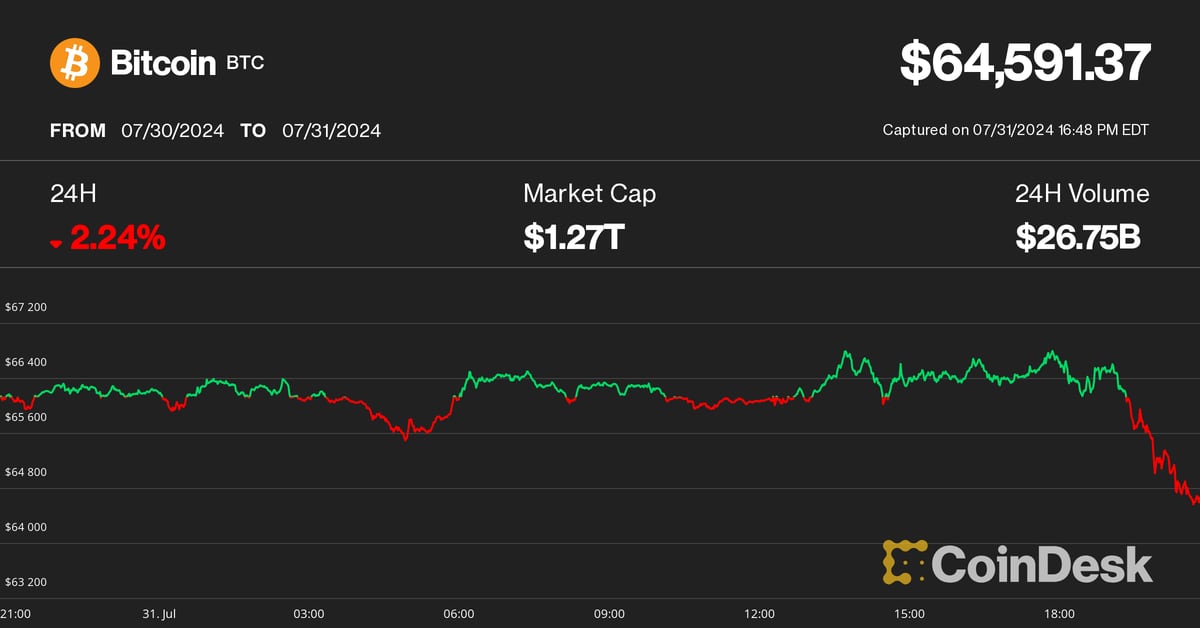
Cryptocurrencies fell sharply on Wednesday as rising geopolitical risks captivated investors’ attention following the conclusion of the Federal Reserve’s July meeting.
Bitcoin (BTC) fell to $64,500 from around $66,500, where it traded following Federal Reserve Chairman Jerome Powell’s press conference and is down more than 2% in the past 24 hours. Major altcoins including ether (ETH)sunbathing (SUN)Avalanche AVAX (AVAX) and Cardano (ADA) also fell, while Ripple’s XRP saved some of its early gains today. The broad cryptocurrency market benchmark CoinDesk 20 Index was 0.8% lower than 24 hours ago.
The liquidation happened when the New York Times reported that Iran’s leaders have ordered retaliation against Israel over the killing of Hamas leader Ismail Haniyeh in Tehran, raising the risk of a wider conflict in the region.
Earlier today, the Fed left benchmark interest rates unchanged and gave little indication that a widely expected rate cut in September is a given. The Fed’s Powell said that while no decision has been made on a September cut, the “broad sense is that we are getting closer” to cutting rates.
While digital assets suffered losses, most traditional asset classes rose higher during the day. U.S. 10-year bond yields fell 10 basis points, while gold rose 1.5% to $2,450, slightly below its record highs, and WTI crude oil prices rose 5%. Stocks also rallied during the day, with the tech-heavy Nasdaq 100 index rebounding 3% and the S&P 500 closing the session 2.2% higher, led by 12% gains in chipmaker giant Nvidia (NVDA).
The different performances across asset classes could be due to traders’ positioning ahead of the Fed meeting, Zach Pandl, head of research at Grayscale, said in an emailed note.
“Equities may have been slightly underutilized after the recent dip, while bitcoin is coming off a strong period with solid inflows, while gold has recovered after a period of weakness,” he said.
“Overall, the combination of Fed rate cuts, bipartisan focus on cryptocurrency policy issues, and the prospect of a second Trump administration that could advocate for a weaker U.S. dollar should be viewed as very positive for bitcoin,” he concluded.
UPDATE (July 31, 2024, 21:30 UTC): Adds grayscale comments.
Bitcoin
No, Bitcoin Will Not Solve Our National Debt
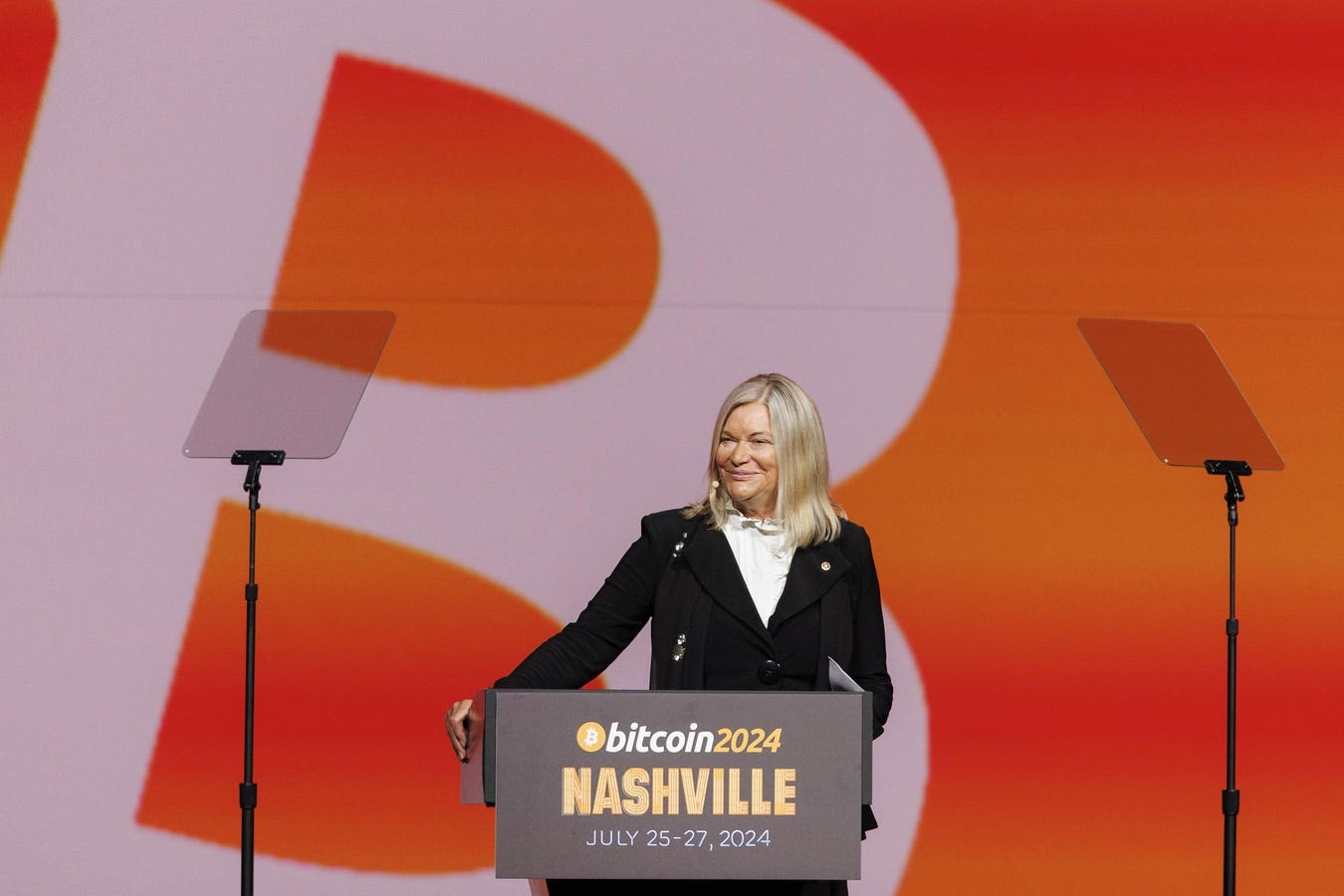
Wyoming Republican Senator Cynthia Lummis speaks at the Bitcoin 2024 conference in … [+] Nashville, Tennessee, U.S., on Saturday, July 27, 2024. Former U.S. President Donald Trump said he would fire the chairman of the Securities and Exchange Commission and pick crypto-friendly regulators if he returns to the White House in a bid to woo virtual currency enthusiasts and capitalize on the industry’s growing influence in the political arena. Photographer: Brett Carlsen/Bloomberg
© 2024 Bloomberg Finance LP
At a Bitcoin conference last weekend, Senator Cynthia Lummis (R-Wyo.) announced future legislation that would direct the Treasury to purchase 1 million Bitcoin, or roughly 5% of the global supply, over five years (which would cost between $60 billion and $70 billion at today’s prices). Lummis claimed that the federal government would be “debt-free because of Bitcoin” if his proposal were to pass, because these Bitcoins could be sold by the federal government at a profit after 20 years. Unfortunately, there are mathematical and conceptual problems that prevent such an approach from solving the federal government’s budget problems.
Let’s start with the math: US National Debt Today stands at nearly $28 trillion (or $35 trillion if you include the “intragovernmental debt” that the general fund owes to other internal government accounting entities, such as the Social Security and Medicare trust funds). This year alone, the federal government spent about $2 trillion more than it took in in revenue, which had to be covered by borrowing money that adds to our national debt.
In comparison, the total market capitalization of Bitcoin today (which is the total number of Bitcoins in existence multiplied by their current market price) is only about $1.3 trillion — and that’s with Bitcoin’s current price near its all-time high. If all the Bitcoin in the world isn’t worth enough to cover a single year’s budget deficit, there’s no way buying 5% of it could plausibly stem the growth of, let alone pay off, our national debt. For the math to work, Bitcoin’s market cap would have to reach a level that is a multiple of the annual economic output of the entire planet (the International Monetary Fund current estimates the sum of each country’s gross domestic product is less than US$110 trillion).
But beyond the math, there are serious conceptual problems with Lummis’s proposal as a partial solution. When the government acquires an asset, it is typically reallocating rather than creating wealth. As the government buys some of the existing supply of Bitcoin, it would reduce the remaining supply available for others to buy on the market. If private demand for Bitcoin remains constant, the result would be an increase in the price of one Bitcoin. The beneficiaries of this transaction would be the current owners of Bitcoin (one of whom is Senator Lummis herself), because they would be in possession of an asset that can be sold at a higher price than the price at which it was originally purchased.
The increase in Bitcoin’s price, and thus the financial benefit to current holders, is likely to be even greater because, rather than remaining constant, private demand would increase as previously cautious investors view the U.S. government’s investment as an indicator of the digital asset’s legitimacy. These higher prices would not only increase demand for Bitcoin, but could also encourage Bitcoin “miners” to increase supply. Bitcoin mining is a extremely energy intensive process that relies on advanced graphics processing units (GPUs). If Bitcoin mining increases demand for GPUs, the GPUs themselves will become more expensive, as they did in 2020. In turn, every activity that depends on GPUs — from video editing to gaming — will also become more expensive.
Perhaps most alarmingly, a boom in Bitcoin mining threatens to stifle promising developments in artificial intelligence (AI). As other Forbes contributors point out, he wroteAI has the potential to revolutionize our economy and boost the productivity of our workforce in countless ways that would increase real wealth for Americans of all socioeconomic backgrounds. But AI also relies on advanced GPUs to function, of which there are already there is not enough supply to meet demand. It would be a profound failure of federal policy to make AI advances more costly to achieve by encouraging people to spend the resources needed to generate digital tokens. Furthermore, even if federal government Bitcoin purchases do not lead to an increase in Bitcoin mining, there are still other ways in which rising Bitcoin prices would displace productive economic investment — but rather than delve into them here, I recommend reading this great 2022 article by Josh Barro about the subject.
For these and other reasons, the federal government should not take any action to push the price of Bitcoin — or any other cryptocurrency, for that matter — above the level set by the free market. If policymakers believe that prices will continue to rise anyway and want to capture some of that value for deficit reduction, there are much better mechanisms for doing so. For example, a capital gains tax increase could aim to capture 5% of the gain on 100% of Bitcoin rather than capturing 100% of the gain on 5% of Bitcoin, as the Lummis proposal would seek to do. In addition to avoiding the market-distorting effects of the Lummis proposal, this approach has the added benefit of not leaving taxpayers holding the bag if the value of Bitcoin plummets, as then many other cryptocurrencies have done.
When it comes to dealing with our national debt, there is no substitute for cutting spending and/or raising taxes. There are no quick fixes here — policymakers must accept tradeoffs and make hard choices about how to allocate limited resources. Fortunately, my team at the Progressive Policy Institute recently published a serious package of proposals that deals with these tradeoffs to put the federal budget on a path to balance within 20 years. Even adopting half of our recommended savings would allow policymakers to keep debt from growing faster than our economy, which is what most economists consider to be the measure of fiscal sustainability. And ours is just one framework: six other think tanks published their own plans to stabilize the debt last week (and notably, none of them proposed spending up to $70 billion of taxpayer funds on Bitcoin).
To Senator Lummis’s credit, she has also supported efforts to promote serious solutions like these in the past. As a member of the U.S. House of Representatives in 2012, Lummis was one of only 38 members who resisted partisan pressure and voted in favor of a congressional budget resolution based on the debt stabilization recommendations of the bipartisan Simpson-Bowles Fiscal Commission. More recently, Lummis was one of nine senators to cosponsor a bill that would establish another bipartisan fiscal commission to generate an updated package of recommendations to stabilize the national debt. It would be a great service to the nation if Senator Lummis would put all her energy into advancing these and other serious efforts to align revenues and spending rather than distracting them with alternative schemes that would merely enrich cryptocurrency investors at the expense of the taxpayer.
Bitcoin
Bitcoin Falls as ETF Flows Reverse, Mt. Gox Moves Billions
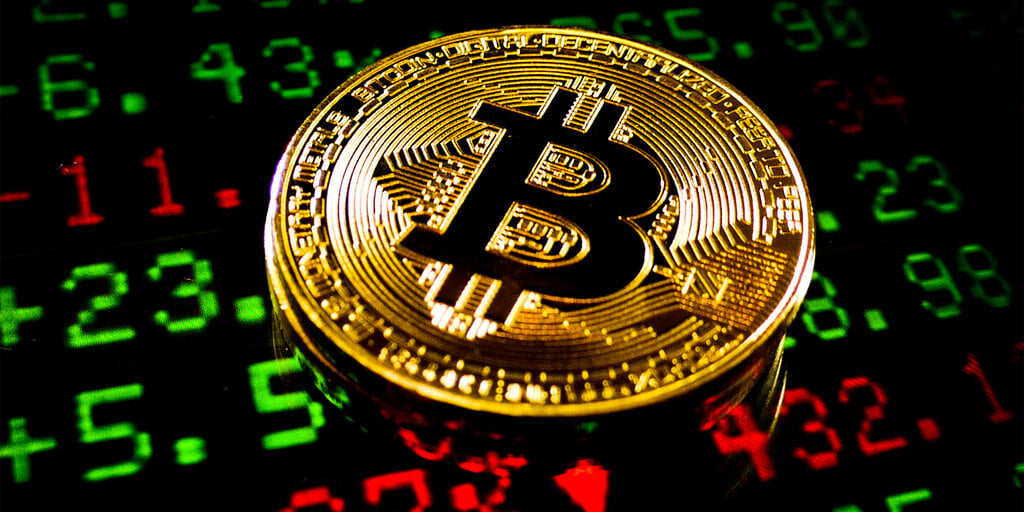
In a week of drastic fluctuations, the price of Bitcoin (BTC) has retreated from its highs and is currently trading at US$66,250, down 0.9% in European trading.
This volatility comes on the heels of a significant surge above $70,000 earlier in the week, fueled by former President Donald Trump’s ambitious cryptocurrency plans announced in a Bitcoin Conference in Nashville.
Trump’s announcement to fire Securities and Exchange Commission Chairman Gary Gensler and establish a strategic Bitcoin reserve if elected president has temporarily sent the cryptocurrency market into a frenzy.
However, the excitement was short-lived as a series of events unfolded which caused investor sentiment to sour.
A significant sell-off of about 8% was triggered when the US Marshals Service moved $2 billion in Bitcoin for new wallets.
This move has reignited fears of a potential large-scale liquidation, compounded by lingering concerns over a possible Bitcoin liquidation from Mt. Gox. Early this morning, Mt. Gox administrator transferred US$2.2 billion value of your BTC assets in a new wallet.
Meanwhile, the US Bitcoin ETF spot market is showing signs of fluctuation, according to data from SoSo Value. On July 30, Bitcoin spot funds experienced their first net outflow in five days, totaling $18.3 million.
The Grayscale Bitcoin Trust (GBTC) saw outflows of $73.6 million, while the BlackRock iShares Bitcoin Trust (IBIT) attracted $74.9 million in inflows. But outflows from other funds left the category in the red at the end of Tuesday’s trading session. The total net asset value of spot Bitcoin ETFs currently stands at a substantial $58.5 billion.
In other crypto news, Ripple (XRP) is up 8.6% in the past 24 hours, hitting over 64 cents – its highest point since March 25, according to CoinGecko. data.
This rally comes amid a scheduled token unlock and growing optimism around a potential deal in the long-running SEC vs. Ripple lawsuit.
The crypto community is closely watching the SEC’s actions, particularly its intention to amend its complaint against Binance regarding “Third-Party Cryptocurrency Securities,” which some interpret as a positive sign for Ripple.
On a market analysis noteSingapore-based cryptocurrency trading desk QCP Capital wrote that while election headlines continue to dominate, several crucial macroeconomic events loom on the horizon.
“Election headlines will continue to be a key focus, but several key macroeconomic events are also on the horizon. Key events starting with the FOMC meeting on Wednesday, megacap tech earnings (Apple, Amazon, Meta) throughout the week, and unemployment data on Friday,” QCP Capital wrote.
Edited by Stacy Elliott.
Bitcoin
1 Top Cryptocurrency That Could Surge Over 4,300%, According to This Wall Street Firm

This bold prediction that Bitcoin will hit $2.9 million by 2050 could redefine your investment strategy.
In a groundbreaking report, VanEck, a leading investment management firm, has set the stage for an extraordinary prediction about Bitcoin‘s (BTC -2.63%) in the future. According to their analysis, Bitcoin could potentially reach a staggering $2.9 million by 2050, marking an astronomical increase of over 4,300% from its current price.
This bold prediction is more than just a headline-grabbing attempt. The report is packed with information across its 20+ pages, and includes plenty of evidence and hypotheses to support its claims. Luckily, I read the whole thing, so you don’t have to. In this article, we’ll explore the key elements of VanEck’s report, deciphering why Bitcoin’s value could skyrocket to such heights and what it means for investors and the financial world at large.
Image source: Getty Images.
Unpacking the VanEck Report
VanEck’s analysis outlines three scenarios for predicting Bitcoin’s future value: the bearish case, the base case, and the bullish case. Each scenario provides a different perspective on how Bitcoin may evolve based on various economic and technological factors, and of course, where its price may be headed.
To arrive at these conclusions, VanEck’s valuation model relies on a combination of historical data, current market trends, and future financial developments. This comprehensive approach aims to assess Bitcoin’s potential as a medium of exchange and reserve asset. With that out of the way, let’s move on to the scenarios.
Bear scenario
In the pessimistic case, Bitcoin’s value is expected to remain relatively stagnant, reflecting limited growth due to regulatory hurdles, technological limitations, or broader economic challenges.
This scenario assumes that Bitcoin will not achieve widespread adoption and will face significant competitive threats from other digital currencies or innovations. If this is the path Bitcoin takes, VanEck predicts that Bitcoin will only reach $130,314 by 2050. This equates to a measly 2.6% compound annual growth rate (CAGR).
Base scenario
The base case presents a more balanced view, where Bitcoin’s value is influenced by moderate adoption and integration into the existing financial system. However, even though it is called the base case, it is still extremely bullish.
This analysis predicts that Bitcoin will reach a price of $2,910,345 and solidify itself as a viable digital asset, resulting in a stronger CAGR of close to 15.7%. Driving this adoption are a multitude of factors, such as rising government debt around the world, reduced use of fiat currenciesbetter technology that makes Bitcoin faster and cheaper to use, and the possibility of Bitcoin becoming the world’s reserve currency.
Bullish scenario
The bullish scenario is the most optimistic, predicting that Bitcoin’s value could reach a staggering $52,386,207 by 2050. Here, Bitcoin’s CAGR rises to 29.3%.
This extreme growth projection is based on Bitcoin achieving widespread adoption as a medium of exchange and a reserve asset. It considers advances in blockchain technology, significant macroeconomic changes, and increased institutional investment. In short, this scenario basically assumes that the world will undergo hyper-Bitcoinization very quickly.
How Bitcoin Could Reach $2.9 Million
While the bear and bull scenarios are unlikely outliers on either end of the spectrum, it’s worth examining the reasoning behind VanEck’s base result in greater detail. This intermediate target strikes a valuable middle ground and does a good job of capturing what makes Bitcoin so unique.
The first catalyst that could send Bitcoin to nearly $3 million is increased adoption as a medium of exchange. As the world and its financial system become more digitized, there is a clear path where Bitcoin could gain traction as a popular medium of exchange. The decentralized nature of the cryptocurrency, coupled with its growing acceptance among merchants and consumers, supports its potential to become a mainstream payment method. If Bitcoin’s use as a transactional currency becomes widespread, VanEck suggests that its value could appreciate significantly.
At a more granular level, technological advancements are critical drivers of Bitcoin’s future valuation. For most of Bitcoin’s existence, its blockchain was more than capable of handling transactions cost-effectively. However, as the years have passed and it has processed more transactions, there has been a need to find a method for Bitcoin to scale efficiently.
Fortunately, there are a number of solutions in development that attempt to make Bitcoin faster and cheaper to use, such as Lightning Network and layer 2 blockchains like Stacks (STX -3.26%). VanEck believes that if Bitcoin is able to scale properly, it will only bolster the cryptocurrency’s prospects following the base case trajectory.
Expanding a bit, VanEck posits that Bitcoin could become a global reserve asset, similar to gold, as institutional investors and nations seek a stable store of value in a turbulent economic landscape. As VanEck’s report outlines, the global financial world is currently in a state of flux.
The currencies of the most prosperous economies (the US, EU, Japan and the UK) are starting to be used less for international payments. Furthermore, these economies, which dominated for much of the last century, face a growing debt burden that could further erode the value of their currencies. VanEck’s report predicts that as this trend worsens, other nations will turn to Bitcoin due to its apolitical construction and robust fundamentals that prioritize value preservation. When all is said and done, Bitcoin could become the world’s global reserve currency, causing its price to soar as governments clamor for a share of its finite supply.
Last food for thought
VanEck’s prediction that Bitcoin could rise to over $2.9 million by 2050 represents a bold and optimistic outlook for the cryptocurrency. It may sound sensationalist, but keep in mind that virtually no one could have imagined that Bitcoin would rise from just a few cents to over $60,000 over the past 15 years.
However, as appealing as this may sound, a bit of restraint is in order. No one has a crystal ball, and while the outlook is promising, investors should carefully weigh the rewards against the risks and, more importantly, Approaching Bitcoin with a long-term perspective.
But for those who believe in its future potential, have an appetite for risk, and are comfortable holding for the long term, Bitcoin’s current value could represent an attractive entry point. See you in 2050.
-
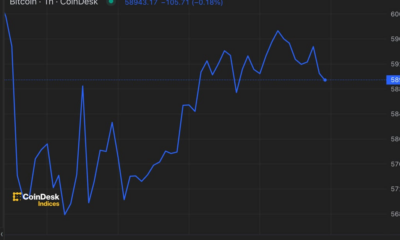
 News1 year ago
News1 year agoBitcoin (BTC) price recovery faces test on non-farm payrolls
-

 Bitcoin12 months ago
Bitcoin12 months ago1 Top Cryptocurrency That Could Surge Over 4,300%, According to This Wall Street Firm
-

 Altcoins12 months ago
Altcoins12 months agoOn-chain data confirms whales are preparing for altcoin surge with increased buy orders
-

 Bitcoin12 months ago
Bitcoin12 months agoThe US government may start accumulating Bitcoin, but how and why?
-
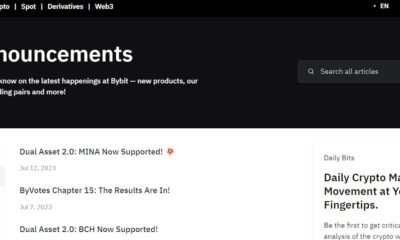
 News1 year ago
News1 year agoNew ByBit Listings for 2024: 10 Potential Listings
-

 News1 year ago
News1 year ago11 Best Crypto TikTok Accounts & Influencers in 2024
-

 Altcoins1 year ago
Altcoins1 year agoMarket giants have taken action!
-

 News1 year ago
News1 year ago11 Best Shitcoins to Buy in 2024: The Full List
-

 Ethereum1 year ago
Ethereum1 year agoTop Meme Coins by Market Capitalization in 2024
-

 News1 year ago
News1 year ago1.08 Trillion SHIBs Dumped on Major Crypto Exchange, What’s Going On?
-

 News1 year ago
News1 year ago19 Best Crypto Games to Play in 2024
-

 Altcoins1 year ago
Altcoins1 year agoAltcoin Recommended by Crypto Expert for Today’s Portfolio












